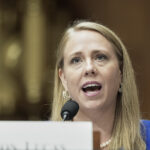Carriers did a phenomenal job in paying the legitimate claims quickly, while taking the customary time frame needed to investigate questionable claims…There were only 27 substantiated complaints.
I want to begin by extending kudos to the entire insurance industry for a commendable performance during the Sept. 11 tragedy. At a time of fear and uncertainty, insurers stepped up to the plate and behaved in exemplary fashion. They behaved professionally and without guidance. In the days following the attack, I was truly proud to be a representative of this industry.
Over 30,000 claims were filed relative to the Sept. 11 attack on the World Trade Center. According to New York State Insurance Department statistics, the vast majority of those claims were settled within an appropriate time frame. In fact, many were settled within days, some at temporary claim tents set up in New York City. Except for those properties within the immediate vicinity of the World Trade Center, most claims submitted were not for physical damages. Instead the civil authority provisions of the policy were triggered and the claimants were filing for business interruption. The reasonable claims were settled with limited documentation.
To date there are very few open claims. The majority of these are likely to be the most complex claims or involve inflated claims that now require litigation. Unfortunately, there are those who will try to take advantage of others while they are vulnerable, and some of the claims may have involved fraud or padding which required further investigation. Carriers have been urged to take a tough stance on fraud and are doing just that. In the case of 9/11 many carriers chose to err on the side of the customer and were lenient in requiring specific documentation and the normal burden of proof.
Carriers did a phenomenal job in paying the legitimate claims quickly, while taking the customary time frame needed to investigate questionable claims. This is further proven by the fact that there were minimal complaints filed with the department related to the 9/11 tragedies. There were fewer than 400 total complaints filed and only 27 of those complaints were actually substantiated.
Conversely, the federal government’s 9/11 victim compensation fund has received 4,419 injury claims, significantly more than administrators expected. More than one-third of the injury claims have been turned down, mainly for lack of medical proof or because the ailments had cleared up. In making claim determinations, the fund administrators seek proof the applicant was at Ground Zero within 72 hours of the terror attacks or 96 hours in the case of rescue workers. They also insist on medical documentation of the injuries. While the objectives of the fund to compensate the injured are noble, the claiming behavior is nowhere near the industry standard.
Although it has been over two and a half years, the insurance market is still recovering. New York decided early on to take the uncommon stance that it would NOT approve terrorism exclusions such as those granted by more than 45 other states.
The enactment of the Terrorism Risk Insurance Act (TRIA), a federal backstop program, has been somewhat helpful in comforting insurers and reinsurers. However, this temporary program, which is far from perfect, is due to expire. Unfortunately, the fate of TRIA is uncertain and it is unclear whether any other federal program will be implemented in time for insurers to secure reinsurance contracts for 2005.
We have cautioned that a program needs to be in place before the fourth quarter of 2004, as carriers will be making marketing decisions by the fall. If no program is in place, we are certain there will be market disruption and dislocation—not only affordability but also availability may be a problem for commercial properties.
NYIA has been working with the department to help formulate some alternate mechanism, which would increase capacity and avoid uncertainty. One such alternative could be to allow New York insurers a tax deferred catastrophe reserving option.
Statistics indicate that the hard commercial market has likely reached its peak. There are indications that rates are not increasing at the same level and in some areas rates may be stabilizing. However, affordability is still considered an issue in some instances.
Commercial insurance capacity and pricing in New York is not much different than what is being seen across the country. The industry has rebounded and demonstrated its resolve. We industry will return to the customary insurance cycle.
Melchionni is vice president of the New York Insurance Association Inc., the state trade association of over 75 property/casualty insurers writing in excess of $7 billion in annual New York premiums—over 35 percent of the market. This column is adapted from her remarks before the New York State Assembly Committee on insurance and Committee on Oversight, Analysis & Investigation on Continuing Insurance Issues-Post September 11th. Melchionni can be reached at (518) 432.4227. NYIA can be found at www.nyia.org.
Was this article valuable?
Here are more articles you may enjoy.


 US P/C Posts $35B YTD Underwriting Gain; By-Line Premium Growth Revealed
US P/C Posts $35B YTD Underwriting Gain; By-Line Premium Growth Revealed  Board Calls for US Steel to Address Safety Issues as It Rebuilds Site of Fatal Explosion
Board Calls for US Steel to Address Safety Issues as It Rebuilds Site of Fatal Explosion  Head of EEOC Urges White Men to Report Discrimination
Head of EEOC Urges White Men to Report Discrimination  Brown & Brown Files Suit Over Alleged Howden Poaching of 200+ Employees
Brown & Brown Files Suit Over Alleged Howden Poaching of 200+ Employees 


